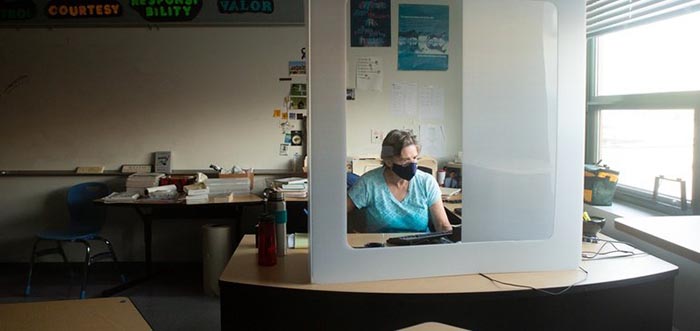
From K-12 Dive
By Naaz Modan
March 3, 2022
Dive Brief:
Almost half, or 44%, of public schools report having full- or part-time teacher vacancies, in a nationally representative survey of 670 public schools conducted by the National Center for Education Statistics. More than half of schools (57%) with one or more vacancies said they increasingly needed to use teachers for work outside their job descriptions.
Schools with at least one vacancy also said special education had the highest teaching vacancies, at 45%, followed by general elementary teaching positions (31%) and substitute teachers (20%).
Of public schools that reported at least one vacancy, 61% cited the COVID-19 pandemic as a cause of increased teaching and nonteaching staff vacancies. The leading cause of vacancies for 51% of schools was resignation rather than retirement.
Dive Insight:
The survey is the first of its kind from the U.S. Education Department since the start of the pandemic and confirms predictions from researchers and anecdotal evidence from administrators of a mass exodus of teachers from their jobs as a result of the health crisis.
“The COVID-19 pandemic has contributed to a staffing shortage in the nation’s schools,” said NCES Commissioner Peggy Carr in an email. Describing the vacancies as “widespread,” Carr said “these issues are disrupting school operations.”
Part of the staffing problem, Carr added, is also a lack of prospective teachers.
To circumvent the shortages, schools in some cases have had to use more teaching and nonteaching staff outside of their intended duties, increase class sizes, share teachers and staff among schools, and limit student transportation.
Shortages also extend beyond the classroom. The NCES survey, for example, shows 49% of public schools reporting at least one nonteaching staff vacancy as of January 2022, including custodial, nutrition and transportation staff.
To address the various shortages, states like New Mexico and Massachusetts resorted to using the National Guard to fill gaps in classrooms and on school buses.
According to a separate nationally representative survey conducted and released in late 2021 by the National Association of Secondary School Principals, 68% of principals reported being concerned about the teacher shortage in the 2021-22 school year and about teacher burnout.
Principals also listed “providing guidance and mental health support” to teachers and staff as one of the top three challenges during the pandemic.
The most recent NCES report comes the same week as President Joe Biden’s first State of the Union address, which urged schools to use federal funds to hire teachers.
U.S. Secretary of Education Miguel Cardona similarly urged schools in December 2021 to consider short-term and long-term investments to curb teacher shortages, including increasing teacher wages, supporting teachers’ well-being and providing enough substitutes. He reiterated his support for districts using American Rescue Plan funds to address teaching shortages in response to the new NCES data.
“Now, as we set our sights on achieving a robust and equitable recovery for all our nation’s students, we must help our schools address teacher vacancies and staff shortages that undermine their critical work,” he said in an emailed statement, adding that ARP funds could be used to provide bonuses, higher pay and recruitment incentives.
Cardona also suggested hiring tutors, school counselors, classroom aides and other staff to help prevent burnout.
Some school finance experts, however, have warned against using short-term funds for long-term teaching positions. Long-term commitments like pay raises and financing new positions, they say, could be difficult to maintain once federal relief funding dries up.
Still, some states have included in their spending plans the intention to direct federal relief funds to strengthening teacher retention and recruitment programs.
“School leaders are encouraged by the influx of funds going to public education during this time of need,” said NASSP CEO Ronn Nozoe in an emailed statement.
“Yet in this unprecedented time, significant investments in educator workforce development are needed,” Nozoe said “Educators are stretched thin, and without immediate steps to address teacher, principal, and staff shortages and wellbeing, it will continue to be challenging to ensure school communities get the help they deserve.”
Photo: Permission granted by All4Ed
Read this and other stories at K-12 Dive

